
These discoveries provide tangible evidence of massive vertebrate group diversification tens of millions of years before the start of the so-called “Age of Fishes” about 420 million years ago.
The ancient shark was found in China and is humans’ oldest jawed ancestor.
The apex predators of the ocean are often shown as living sharks. Paleontologists have been able to locate remains of ancient ancestors that originate from the Palaeozoic era, which dates back hundreds of millions of years ago. These ancient “sharks,” often referred to as acanthodians, were covered with spines. Unlike modern sharks, they evolved bony “armor” around their paired fins.
Scientists were shocked by the age of a newly discovered acanthodian species from China. The discovery is the oldest undisputed jawed fish and precedes the first acanthodian body fossils by around 15 million years.
The researchers’ findings were recently published in the journal Nature.
Reconstructed from thousands of tiny skeletal fragments, Fanjingshania, named after the famous UNESCO World Heritage Site Fanjingshan, is a bizarre fish with an external bony “armor” and multiple pairs of fin spines that set it apart from living jawed fish, cartilaginous sharks, and rays, and bony ray- and lobe-finned fish.
Examination of Fanjingshania by a team of researchers from the Chinese Academy of Sciences, Qujing Normal University, and the University of Birmingham revealed that the species is anatomically close to groups of extinct spiny “sharks” collectively known as acanthodians. Unlike modern sharks, acanthodians have skin ossifications of the shoulder region that occur primitively in jawed fish.
The fossil remains of Fanjingshania were discovered in bone bed samples of the Rongxi Formation in Shiqian County, Guizhou Province, China.
These discoveries provide verifiable proof that major vertebrate groupings began to diversify tens of millions of years before the 420 million-year-old start of the so-called “Age of Fishes”
The scientists discovered characteristics that distinguish Fanjingshania from every other known vertebrate. It has pectoral, pre-pectoral, and pre-pelvic spines that fuse together as a single unit with dermal shoulder girdle plates. Furthermore, it was found that the shoulder plates’ ventral and lateral portions extend to the pectoral fin spines’ posterior edge. The species possesses distinctive trunk scales, and the crowns of these scales are made up of a row of tooth-like elements (odontodes) that are adorned with irregular nodose ridges. Strangely, the growth of dentine is recorded in the scales but not in other parts of the dermal skeleton, such as the fin spines.
“This is the oldest jawed fish with known anatomy,” said Prof. Zhu Min from the Institute of Vertebrate Paleontology and Paleoanthropology (IVPP) of the Chinese Academy of Sciences. “The new data allowed us to place Fanjingshania in the phylogenetic tree of early vertebrates and gain much-needed information about the evolutionary steps leading to the origin of important vertebrate adaptations such as jaws, sensory systems, and paired appendages.”
From the outset, it was clear to the scientists that Fanjingshania’s shoulder girdle, with its array of fin spines, is key to pinpointing the new species’ position in the evolutionary tree of early vertebrates. They found that a group of acanthodians, known as climatiids, possess the full complement of shoulder spines recognized in Fanjingshania. What is more, in contrast to normal dermal plate development, the pectoral ossifications of Fanjingshania and the climatiids are fused to modified trunk scales. This is seen as a specialization from the primitive condition of jawed vertebrates where the bony plates grow from a single ossification center.
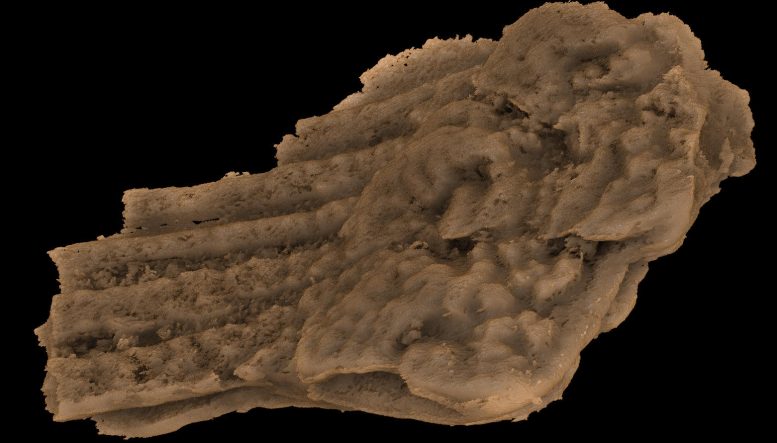
Fragment of the pectoral dermal skeleton (part of a pectoral spine fused to shoulder girdle plate) of Fanjingshania renovata shown in ventral view. Credit: Andreev, et al
Unexpectedly, the fossil bones of Fanjingshania show evidence of extensive resorption and remodeling that are typically associated with skeletal development in bony fish, including humans.
“This level of hard tissue modification is unprecedented in chondrichthyans, a group that includes modern cartilaginous fish and their extinct ancestors,” said lead author Dr. Plamen Andreev, a researcher at Qujing Normal University. “It speaks about greater than currently understood developmental plasticity of the mineralized skeleton at the onset of jawed fish diversification.”
The resorption features of Fanjingshania are most apparent in isolated trunk scales that show evidence of tooth-like shedding of crown elements and removal of dermal bone from the scale base. Thin-sectioned specimens and tomography slices show that this resorptive stage was followed by the deposition of replacement crown elements. Surprisingly, the closest examples of this skeletal remodeling are found in the dentition and skin teeth (denticles) of extinct and living bony fish. In Fanjingshania, however, the resorption did not target individual teeth or denticles, as occurred in bony fish, but instead removed an area that included multiple scale denticles. This peculiar replacement mechanism more closely resembles skeletal repair than the typical tooth/denticle substitution of jawed vertebrates.
The Chongqing fish fossil depository is the world’s only early Silurian Lagerstätte which preserves complete, head-to-tail jawed fishes, providing a peerless chance to peek into the proliferating “dawn of fishes”. Credit: NICE Tech/ScienceApe
A phylogenetic hypothesis for Fanjingshania that uses a numeric matrix derived from observable characters confirmed the researchers’ initial hypothesis that the species represents an early evolutionary branch of primitive chondrichthyans. These results have profound implications for our understanding of when jawed fish originated since they align with morphological clock estimates for the age of the common ancestor of cartilaginous and bony fish, dating it to around 455 million years ago, during a period known as the Ordovician.
These results tell us that the absence of undisputed remains of jawed fish of Ordovician age might be explained by the under-sampling of sediment sequences of comparable antiquity. They also point towards a strong preservation bias against teeth, jaws, and articulated vertebrate fossils in strata coeval with Fanjingshania.
“The new discovery puts into question existing models of vertebrate evolution by significantly condensing the timeframe for the emergence of jawed fish from their closest jawless ancestors. This will have a profound impact on how we assess evolutionary rates in early vertebrates and the relationship between morphological and molecular change in these groups,” said Dr. Ivan J. Sansom from the University of Birmingham.
Reference: “Spiny chondrichthyan from the lower Silurian of South China” by Plamen S. Andreev, Ivan J. Sansom, Qiang Li, Wenjin Zhao, Jianhua Wang, Chun-Chieh Wang, Lijian Peng, Liantao Jia, Tuo Qiao, and Min Zhu, 28 September 2022, Nature.
DOI: 10.1038/s41586-022-05233-8

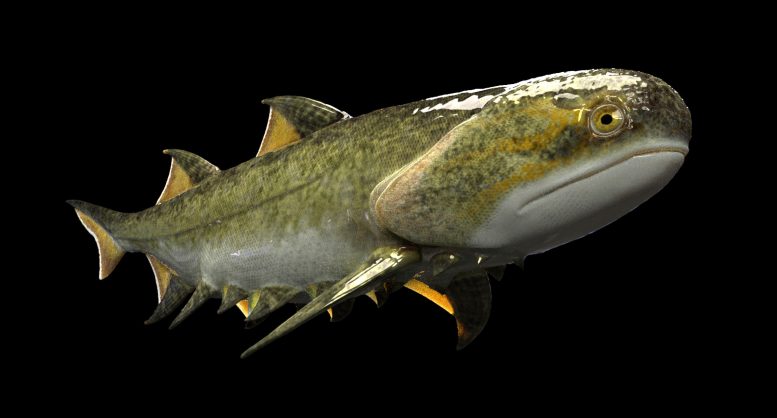
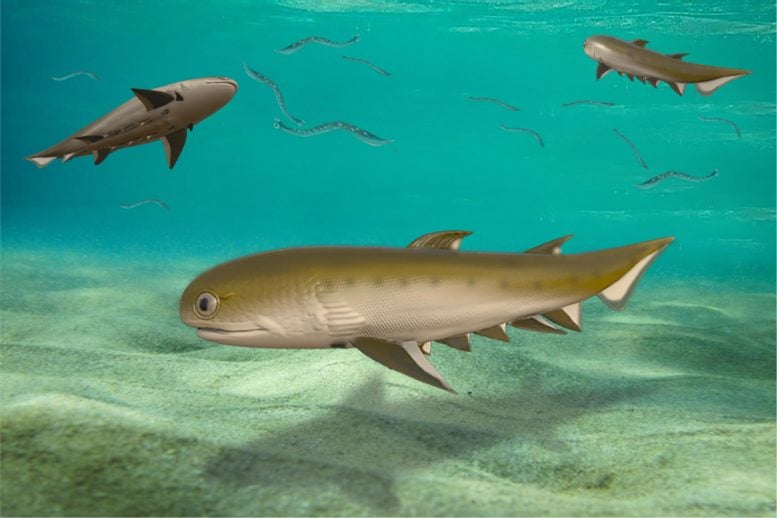
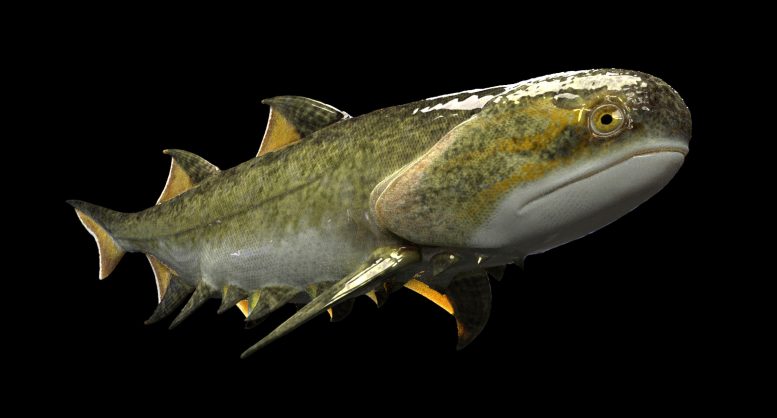
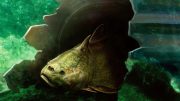



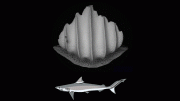
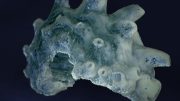

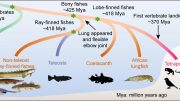
I wasn’t aware that humans were considered “bony fish.”
Our ancestors were likely bony fish.
The common ancestor theory. Wallace was published on this theory a year before Darwin. 165 years. We have massive modern excavation devices. I hope they haven’t just given up on finding the intermediate body designs to show the changes. They would make a nice definitive final piece of indisputable evidence. Don’t give up hope. 165 years, WoW
What a poorly written, badly presented article. The ONLY thing the University of Birmingham agree with teh discovers is ‘the fossil is anatomically close to groups of extinct spiny “sharks” collectively known as acanthodians’ – That’s it. All the other claims are far to early to be considered even theory, all other claims are speculative at best without rigorously examinations by other scientists in the field.
Gardner
“I wasn’t aware that humans were considered “bony fish.””
The father of philosophy Anaximander stated this around 450 BC